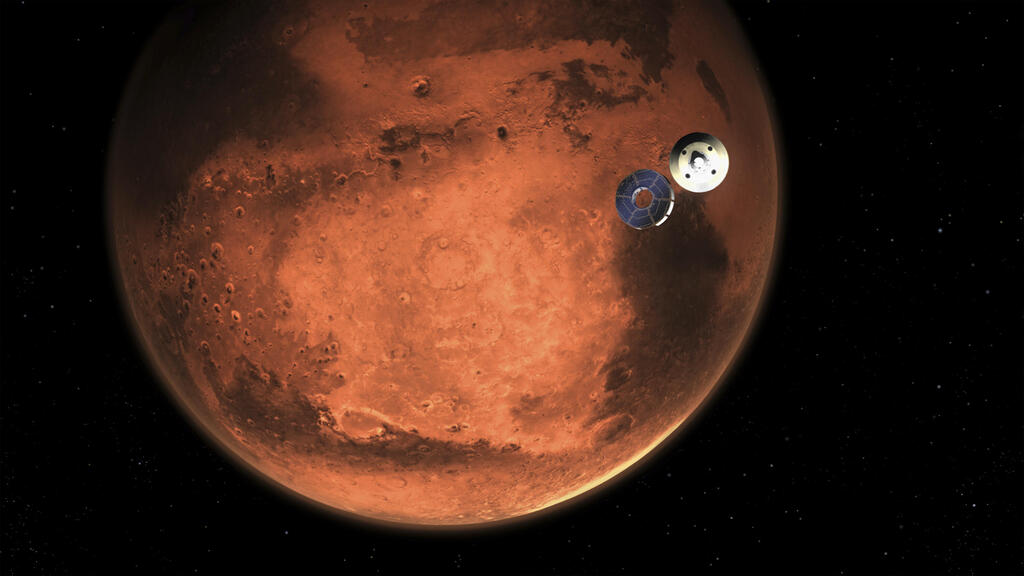Mars is easily recognizable in the night sky by its distinct red hue. In fact, the color is as closely tied to the planet as Earth's oceans or Saturn’s rings. Thanks to decades of spacecraft exploration, scientists know that this red color comes from iron-rich dust, the same compound that gives rust and even blood their reddish tint.
The presence of iron oxides suggests that iron in Martian rocks once reacted with liquid water or with oxygen in the planet’s atmosphere, much like how rust forms on Earth. Over billions of years, this iron oxide broke down into fine dust, which was then carried across the planet’s surface by strong winds—a process that continues today. These winds, along with volcanic activity in Mars’ distant past, helped distribute the dust, shaping the planet’s characteristic appearance.
Scientists are still debating the source of the oxygen in Mars’ iron oxides and whether it indicates that the planet was ever habitable. One leading theory suggests that Mars once had vast oceans, and water interacting with iron compounds at the surface may have transferred oxygen atoms, triggering the rusting process.
However, past studies based on remote observations failed to find direct evidence of liquid water’s role in this oxidation. In 2004, NASA discovered particles of hematite on Mars—a mineral that can be red and often forms in water. Researchers believed this supported the idea that Mars had liquid water billions of years ago.
Now, a new study published in Nature Communications suggests that Mars’ red color is better explained by a different type of iron oxide, called ferrihydrite, which contains water.
Lead study author Dr. Adomas Valantinas of Brown University said that researchers attempted to recreate Martian dust in the lab using different types of iron oxides. “We found that ferrihydrite mixed with basalt, a volcanic rock, best fits the minerals seen by spacecraft at Mars,” he said.
3 View gallery


An illustration of Mars depicting the oceans that existed on its surface 3.6 billion years ago
(Illustration: Robert Citron/Handout, Reuters)
“The major implication is that because ferrihydrite could only have formed when water was still present on the surface, Mars rusted earlier than we previously thought. Moreover, the ferrihydrite remains stable under present-day conditions on Mars.”
To simulate Martian dust, Valantinas and his team used an advanced milling technique to grind particles to a size just 1/100th the width of a human hair. They then analyzed the samples using the same techniques employed by spacecraft orbiting Mars, ultimately identifying ferrihydrite as the best match.
<< Get the Ynetnews app on your smartphone: Google Play: https://bit.ly/4eJ37pE | Apple App Store: https://bit.ly/3ZL7iNv >>
"This study is the result of the complementary datasets from the fleet of international missions exploring Mars from orbit and at ground level," Colin Wilson, a scientist on the European Space Agency’s ExoMars Trace Gas Orbiter (TGO) and Mars Express missions.
Analysis from Mars Express focused on the mineralogy of the dust and confirmed that even heavily dust-covered regions contain water-rich minerals. Meanwhile, TGO’s unique orbit allowed scientists to observe the same regions under different lighting conditions, helping them distinguish particle size and composition—key factors in accurately recreating Martian dust in the lab.
3 View gallery


A diagram showing the process of Mars' transformation from a gray, wet planet to a red, dusty one
(Illustration: European Space Agency)
In addition to ESA’s missions, researchers also used data from NASA’s Mars Reconnaissance Orbiter (MRO) and measurements from the rovers Curiosity, Pathfinder and Opportunity.
"We eagerly await the results from upcoming missions like ESA's Rosalind Franklin rover and the NASA-ESA Mars Sample Return, which will allow us to probe deeper into what makes Mars red," added Colin.
"Some of the samples already collected by NASA's Perseverance rover and awaiting return to Earth include dust; once we get these precious samples into the lab, we’ll be able to measure exactly how much ferrihydrite the dust contains, and what this means for our understanding of the history of water — and the possibility for life — on Mars."


